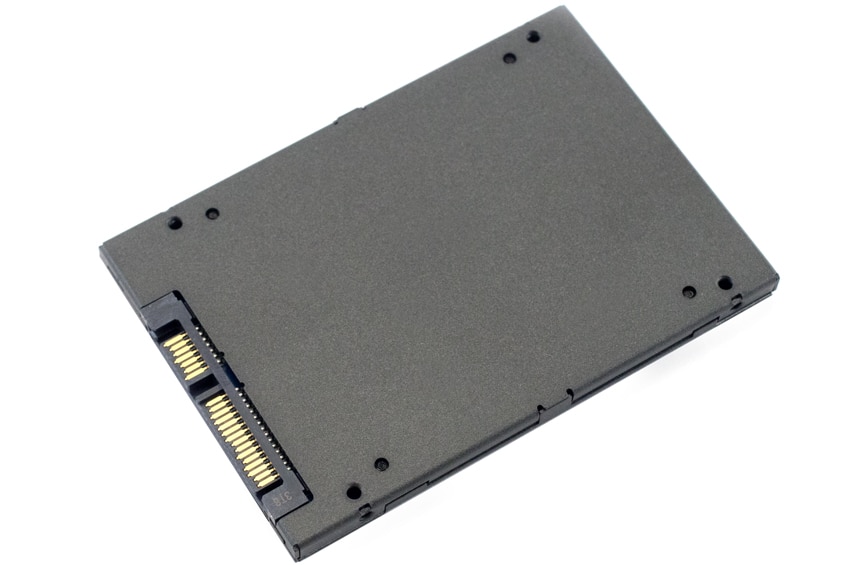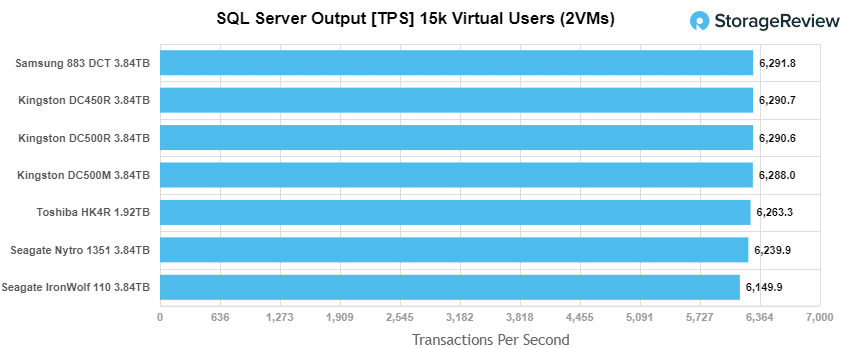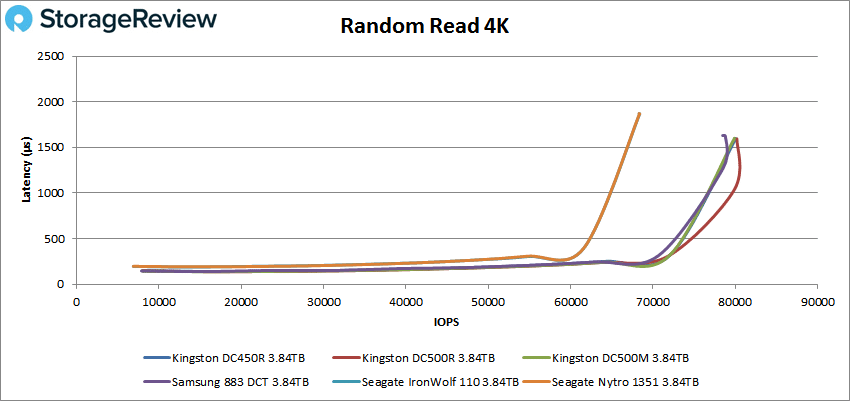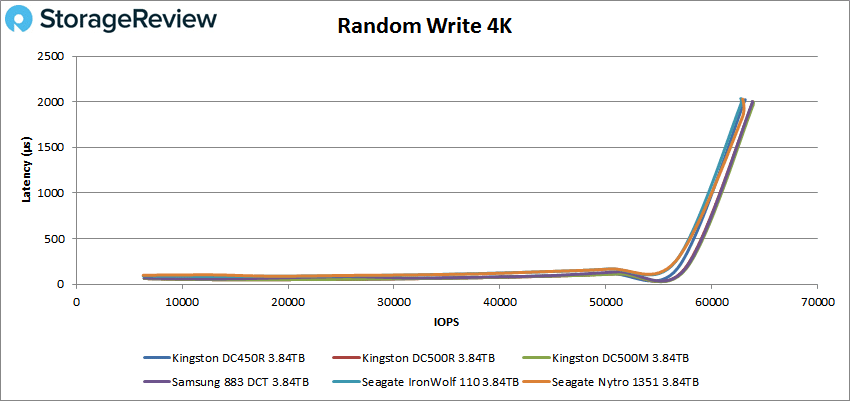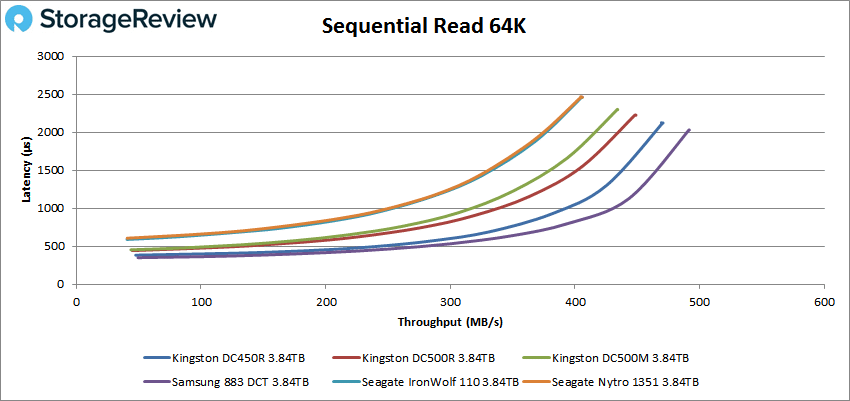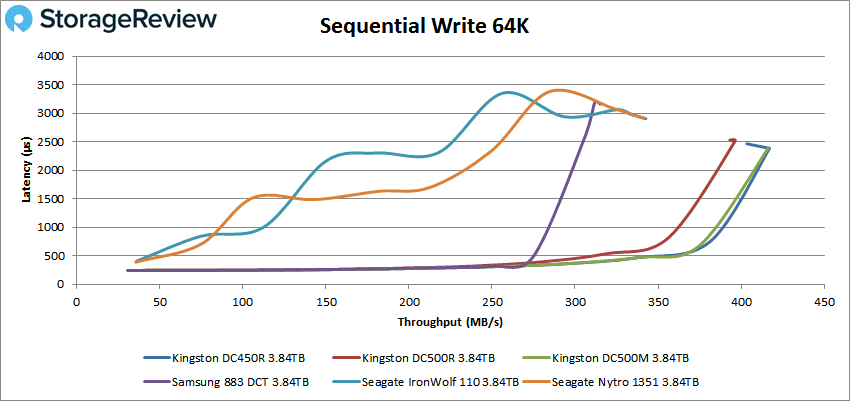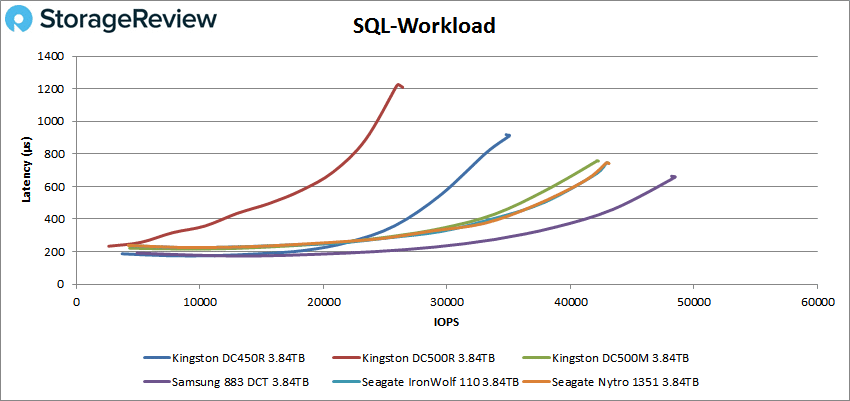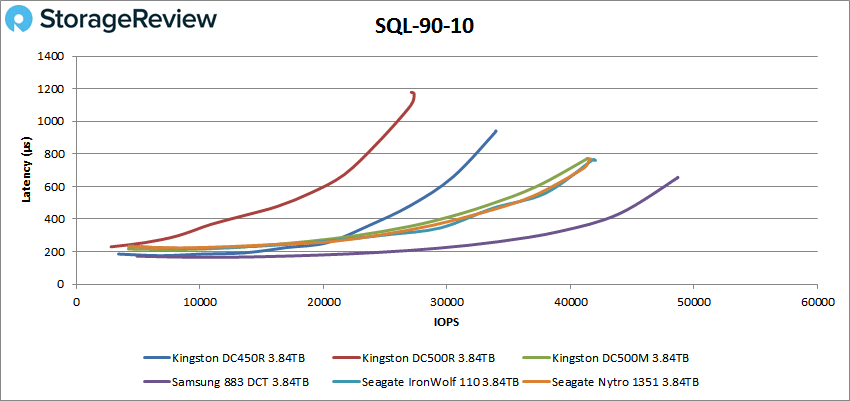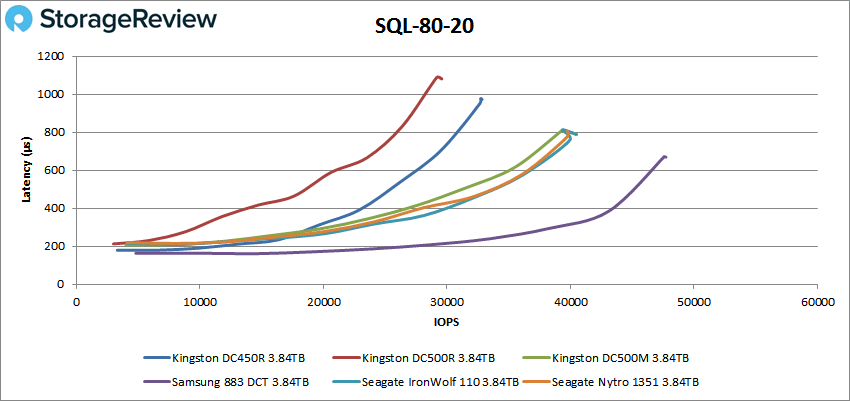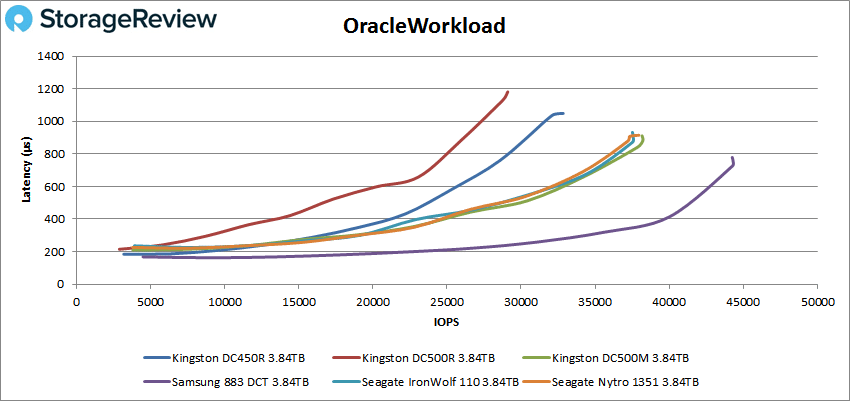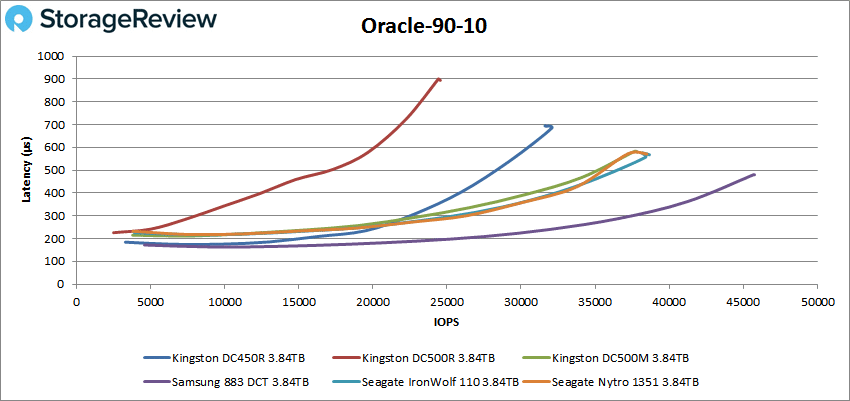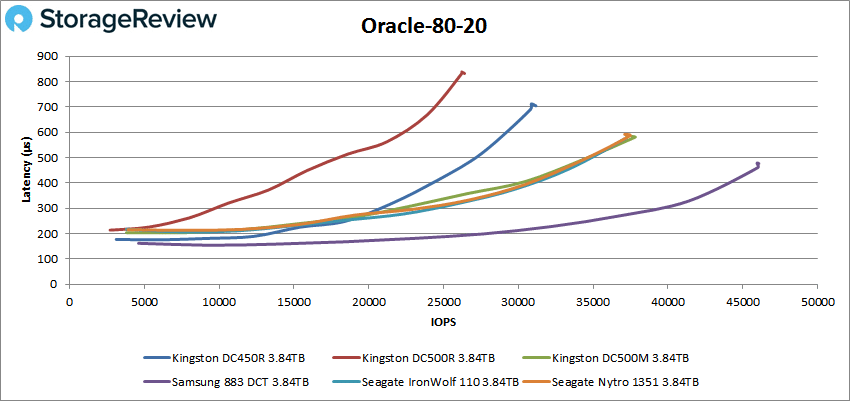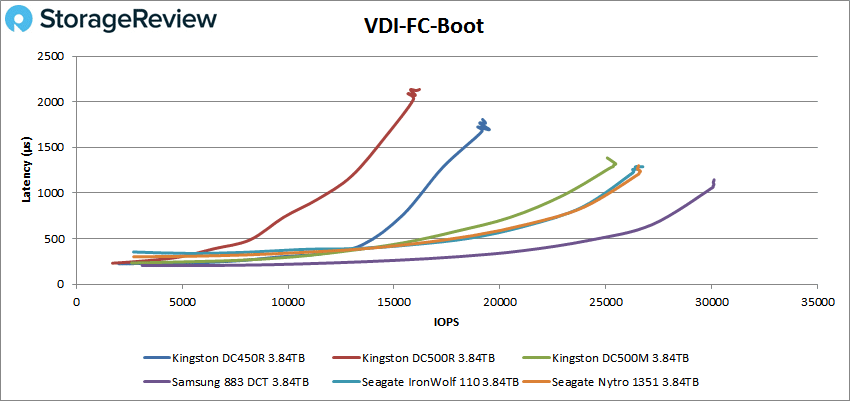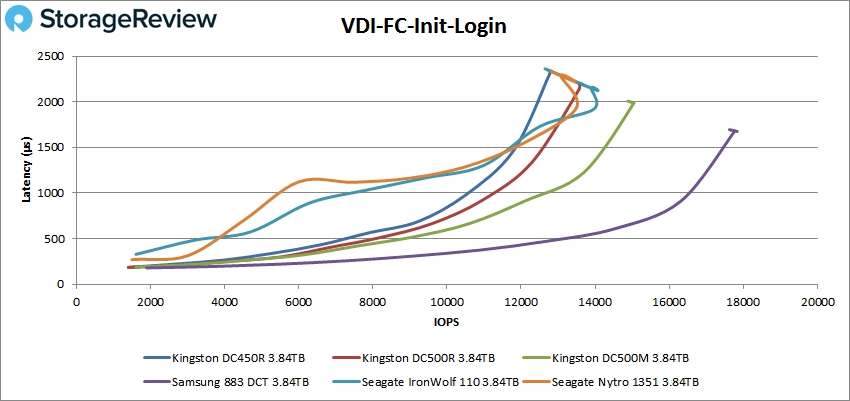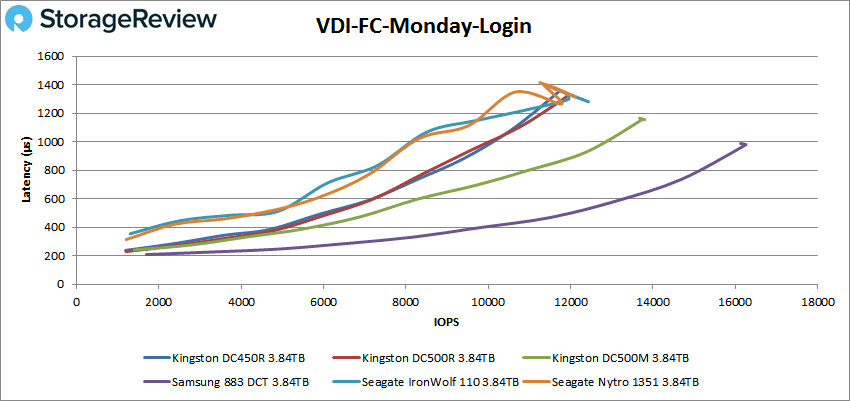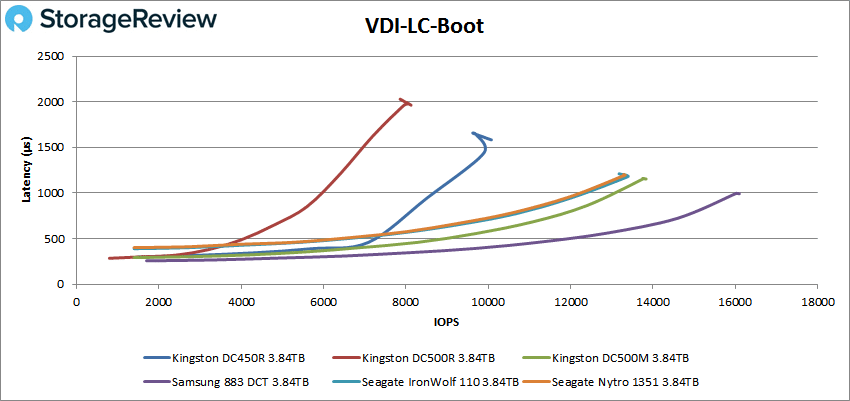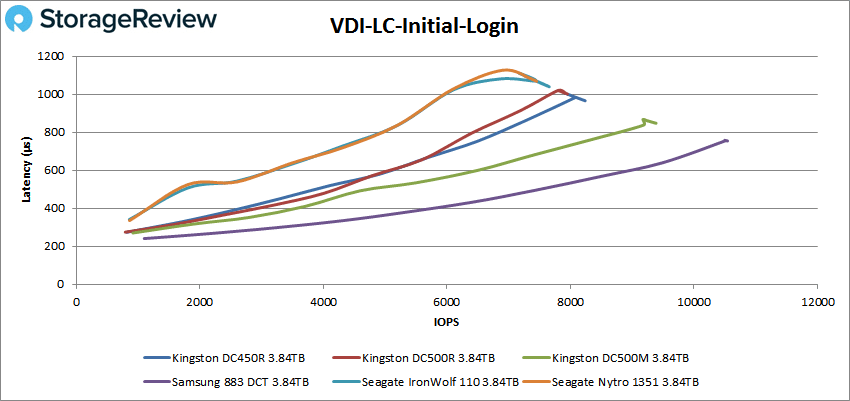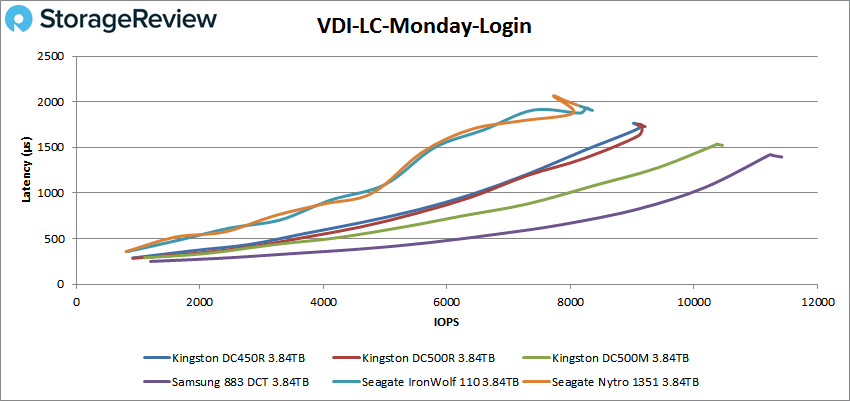
Released a couple of months ago, the Kingston DC450R is an enterprise SATA SSD created for the data center. The R at the end of the name is indicative of the focus of the drive, in this case, read-centric. Specifically, the DC450R is designed with strict QoS requirements, to ensure performance consistency over a wide range of read intensive and read caching workloads. The Kingston DC450R SSD is ideal for Content Delivery Networks (CDN), edge computing applications, as well as various SDS architectures.
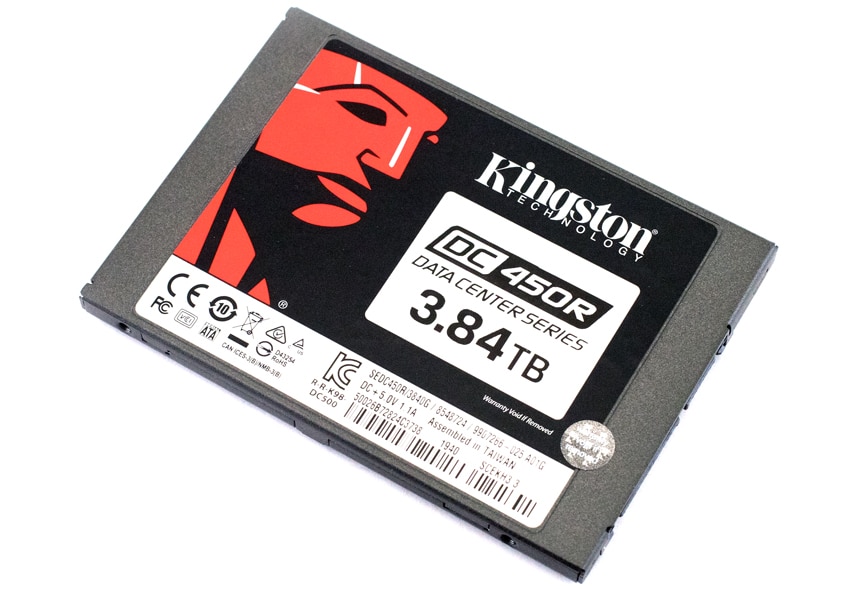
Leveraging 3D TLC NAND, Kingston’s DC450R comes in a capacity range from 480GB up to 3.84TB in a 2.5” form factor. The drive is quoted at having speeds as high as 560MB/s read and 530MB/s. For throughput the drive is stated to deliver up to 99K IOPS read and 28K IOPS write with latency less than 500µs read and under 2ms for write. The drive is also stated to live up to the demands of 24/7 uptime and reliability with a max TBW of 2,823TB. The DC450R comes in a SED flavor for extra protection that uses XTS-AES 256-bit encryption.
Though data center drive makers typically don’t list their price, Kingston bucks that trend with prices ranging from $87 for the 480GB to $540 for the 3.84TB version. The drives also come with a 5-year warranty.
Kingston DC450R SSD Specifications
| Form Factor | 2.5″ |
| Interface | SATA Rev. 3.0 (6Gb/s) With backwards compatibility to SATA Rev. 2.0 (3Gb/s) |
| Capacities | 480GB, 960GB, 1.92TB, 3.84TB |
| NAND | 3D TLC |
| Self-Encrypting Drive (SED) | AES 256-bit Encryption |
| Performance | |
| Sequential Read/Write | 480GB – 560MBs/510MBs 960GB – 560MBs/530MBs 1.92TB – 560MBs/530MBs 3.84TB – 560MBs/525MBs |
| Steady-State 4k Read/Write | 480GB – 99,000/17,000 IOPS 960GB – 98,000/26,000 IOPS 1.92TB – 99,000/28,000 IOPS 3.84TB – 99,000/26,000 IOPS |
| Quality of Service (Latency) | TYP Read/Write: <500 µs / <2 ms |
| Endurance | 480GB — 285TB (0.3 DWPD/5yrs) 960GB — 582TB (0.3 DWPD/5yrs) 1.92TB — 1301TB (0.3 DWPD/5yrs) 3.84TB — 2823TB (0.3 DWPD/5yrs) |
| MTBF | 2 million hours |
| Power Consumption |
|
| Environmental | |
| Storage Temperature | -40°C ~ 85°C |
| Operating Temperature | 0°C ~ 70°C |
| Physical | |
| Dimensions | 69.9mm x 100mm x 7mm |
| Weight | 92.34g |
| Vibration Operating | 2.17G Peak (7–800Hz) |
| Vibration Non-operating | 20G Peak (10–2000Hz) |
| Warranty/support | Limited 5-year warranty with free technical support |
Performance
Testbed
Our Enterprise SSD reviews leverage a Lenovo ThinkSystem SR850 for application tests and a Dell PowerEdge R740xd for synthetic benchmarks. The ThinkSystem SR850 is a well-equipped quad-CPU platform, offering CPU power well in excess of what’s needed to stress high-performance local storage. Synthetic tests that don’t require a lot of CPU resources use the more traditional dual-processor server. In both cases, the intent is to showcase local storage in the best light possible that aligns with storage vendor maximum drive specs.
Lenovo ThinkSystem SR850
- 4 x Intel Platinum 8160 CPU (2.1GHz x 24 Cores)
- 16 x 32GB DDR4-2666Mhz ECC DRAM
- 2 x RAID 930-8i 12Gb/s RAID Cards
- 8 NVMe Bays
- VMware ESXI 6.5
Dell PowerEdge R740xd
- 2 x Intel Gold 6130 CPU (2.1GHz x 16 Cores)
- 4 x 16GB DDR4-2666MHz ECC DRAM
- 1x PERC 730 2GB 12Gb/s RAID Card
- Add-in NVMe Adapter
- Ubuntu-16.04.3-desktop-amd64
Testing Background
The StorageReview Enterprise Test Lab provides a flexible architecture for conducting benchmarks of enterprise storage devices in an environment comparable to what administrators encounter in real deployments. The Enterprise Test Lab incorporates a variety of servers, networking, power conditioning, and other network infrastructure that allows our staff to establish real-world conditions to accurately gauge performance during our reviews.
We incorporate these details about the lab environment and protocols into reviews so that IT professionals and those responsible for storage acquisition can understand the conditions under which we have achieved the following results. None of our reviews are paid for or overseen by the manufacturer of equipment we are testing.
Something to note here with the comparables, particularly the Kingston comparables, is that DC450R is less of a performance-centric drive and aimed more at the entry-level Data Center or Rip & Replace use models. The drive is built to be predictable and reliable at a good cost, not a performance monster. To get the price down, Kingston removed the power-failure module (PCap) from the BOM, and reduced some of the extra NAND as found in the DC 500R/M.
Comparables for this review:
- Samsung 883 DCT 3.84TB (0.8 DWPD)
- Kingston DC500R 3.84TB (0.5 DWPD)
- Kingston DC500M 3.84TB (1.3 DWPD)
- Toshiba HK4R 1.92TB (1 DWPD)
- Seagate Nytro 1351 3.84TB
- Seagate IronWolf 110 3.84TB
Application Workload Analysis
In order to understand the performance characteristics of enterprise storage devices, it is essential to model the infrastructure and the application workloads found in live-production environments. Our benchmarks for the Kingston DC450R are therefore the MySQL OLTP performance via SysBench and Microsoft SQL Server OLTP performance with a simulated TCP-C workload. For our application workloads, each drive will be running 2-4 identically configured VMs.
SQL Server Performance
Each SQL Server VM is configured with two vDisks: 100GB volume for boot and a 500GB volume for the database and log files. From a system-resource perspective, we configured each VM with 16 vCPUs, 64GB of DRAM and leveraged the LSI Logic SAS SCSI controller. While our Sysbench workloads tested previously saturated the platform in both storage I/O and capacity, the SQL test is looking for latency performance.
This test uses SQL Server 2014 running on Windows Server 2012 R2 guest VMs, and is stressed by Quest’s Benchmark Factory for Databases. StorageReview’s Microsoft SQL Server OLTP testing protocol employs the current draft of the Transaction Processing Performance Council’s Benchmark C (TPC-C), an online transaction-processing benchmark that simulates the activities found in complex application environments. The TPC-C benchmark comes closer than synthetic performance benchmarks to gauging the performance strengths and bottlenecks of storage infrastructure in database environments. Each instance of our SQL Server VM for this review uses a 333GB (1,500 scale) SQL Server database and measures the transactional performance and latency under a load of 15,000 virtual users.
SQL Server Testing Configuration (per VM)
- Windows Server 2012 R2
- Storage Footprint: 600GB allocated, 500GB used
- SQL Server 2014
- Database Size: 1,500 scale
- Virtual Client Load: 15,000
- RAM Buffer: 48GB
- Test Length: 3 hours
- 2.5 hours preconditioning
- 30 minutes sample period
For our SQL Server transactional benchmark, the Kingston DC450R placed second overall with 6,290.7 TPS. Interesting to note that it was only 1.1 TPS away from the top spot.
Looking at SQL Server latency the DC450R once again took second with 26ms, again missing the top spot by a tiny margin, in this case 1ms.
Sysbench Performance
The next application benchmark consists of a Percona MySQL OLTP database measured via SysBench. This test measures average TPS (Transactions Per Second), average latency, and average 99th percentile latency as well.
Each Sysbench VM is configured with three vDisks: one for boot (~92GB), one with the pre-built database (~447GB), and the third for the database under test (270GB). From a system-resource perspective, we configured each VM with 16 vCPUs, 60GB of DRAM and leveraged the LSI Logic SAS SCSI controller.
Sysbench Testing Configuration (per VM)
- CentOS 6.3 64-bit
- Percona XtraDB 5.5.30-rel30.1
- Database Tables: 100
- Database Size: 10,000,000
- Database Threads: 32
- RAM Buffer: 24GB
- Test Length: 3 hours
- 2 hours preconditioning 32 threads
- 1 hour 32 threads
With the Sysbench transactional benchmark, the DC450R held second place with 2,124.5 TPS.
In Sysbench average latency, the DC450R had a latency of 60.2ms, again placing it second.
For our worst-case scenario latency (99thpercentile), the Kingston DC450R had 106.7ms, a very good score, and again placing second to the Samsung 883 DCT.
VDBench Workload Analysis
When it comes to benchmarking storage devices, application testing is best, and synthetic testing comes in second place. While not a perfect representation of actual workloads, synthetic tests do help to baseline storage devices with a repeatability factor that makes it easy to do apples-to-apples comparison between competing solutions. These workloads offer a range of different testing profiles ranging from “four corners” tests, common database transfer size tests, to trace captures from different VDI environments. All of these tests leverage the common vdBench workload generator, with a scripting engine to automate and capture results over a large compute testing cluster. This allows us to repeat the same workloads across a wide range of storage devices, including flash arrays and individual storage devices. Our testing process for these benchmarks fills the entire drive surface with data, then partitions a drive section equal to 25% of the drive capacity to simulate how the drive might respond to application workloads. This is different than full entropy tests which use 100% of the drive and take them into steady state. As a result, these figures will reflect higher-sustained write speeds.
Profiles:
- 4K Random Read: 100% Read, 128 threads, 0-120% iorate
- 4K Random Write: 100% Write, 64 threads, 0-120% iorate
- 64K Sequential Read: 100% Read, 16 threads, 0-120% iorate
- 64K Sequential Write: 100% Write, 8 threads, 0-120% iorate
- Synthetic Database: SQL and Oracle
- VDI Full Clone and Linked Clone Traces
In our first VDBench Workload Analysis, Random 4K Read, the Kingston stayed under 1ms until about 75K IOPS and peaked at 80,044 IOPS with a latency of 1.6ms. This puts the drive about third overall in peak performance however it is right in line with the other top performers.
Next up is our random 4K write. Here, all the drives were incredibly close to one another in performance with the DC450R breaking 1ms at about 60K IOPS and going on to peak at 63,121 IOPS at a latency of 2ms.
Moving on to sequential workloads, first up is our 64K read. Here the DC450R had sub-millisecond latency until about 6,200 IOPS or just shy of 400MB/s and peaked at 7,529 IOPS or 471MB/s with a latency of 2.1ms, placing second overall.
For 64K sequential writes the DC450R stayed under 1ms until about 6,300 IOPS or about 370MB/s and peaked at 6,673 IOPS or 416MB/s with a latency of 2.4ms. This would place this read-centric drive at the top of the write pack.
Next, we move on to our SQL workloads where the Kingston DC450R had sub-millisecond latency in all three tests. With SQL the DC450R landed about in the middle with peak performance of 35,064 IOPS with a latency of 911.7µs.
For SQL 90-10, the DC450R ended near the bottom of the pack with a peak score of 33,973 IOPS and a latency of 933.7µs.
And for SQL 80-20 the DC450R once again came in next to last with a peak performance of 32,846 IOPS with a latency of 972.6µs.
Moving on to Oracle workloads, the Kingston DC450R was still hanging around near the bottom of the pack finishing with peak performance of 82,839 IOPS with a latency of 1.05ms.
In Oracle 90-10 the DC450R did better in regards to latency (peak 684.9µs) but stayed the same placement-wise. The drive had a peak performance of 32,064 IOPS.
For Oracle 80-20 the DC450R came in next to last with peak performance of 31,174 IOPS and a latency of 704.2µs.
Next, we switched over to our VDI clone test, Full and Linked. For VDI Full Clone Boot, the stayed near the bottom of the pack with a peak performance of 19,504 IOPS and a latency of 1.7ms.
For VDI FC Initial Login the DC450R came in last overall with a peak performance of 12,848 IOPS and a latency of 2.3ms.
VDI FC Monday Login saw the DC450R tangled up in the bottom with several other drives, however, at its peak, it came in last with 11,721 IOPS and a latency of 1.35ms.
Switching over to Linked Clone (LC), the DC450R came in fifth, or second to last, in LC Boot with a peak performance of 10,077 IOPS and a latency of 1.6ms.
VDI LC Initial Login saw the DC450R move up to third with a peak performance of 8,238 IOPS and a latency of 965.7µs.
And finally, VDI LC Monday login saw the DC450R come in fourth with a peak performance of 9,173 IOPS and a latency of 1.7ms.
Conclusion
The Kingston DC450R is the company’s latest data center SATA SSD. This particular drive is aimed at read-centric use cases. The drive leverages 3D TLC NAND and can pack up to 3.84TB in a 2.5” form factor. Kingston quotes the SSD as having speeds as high as 560MB/s read and 530MB/s and throughput up to 99K IOPS read and 28K IOPS write with latency less than 500µs read and under 2ms for write. A bigger selling point for this drive may be its endurance of a max TBW of 2,823TB.
To test performance, we pitted the Kingston DC450R against a range of popular SATA SSDs, including its DC500R and DC500M brethren. Overall, the Kingston DC450R showed very impressive results in our Applications Workload Analysis benchmarks giving the Samsung 883 DCT a run for its money and placing just behind it throughout. The DC450R has able to hit 6,290.7 TPS with an average latency of 26ms in our SQL Server. In Sysbench the DC450R was about to hit 2,124.5 TPS with an average latency of 60.2ms, and a worst-case scenario latency of only 106.7ms.
In our VDBench test the DC450R started off strong. In random 4K it had a peak score of 80K IOPS read and 63K IOPS write. For sequential 64K work the drive has able to hit 471MB/s read and 416MB/s write. For the rest of our tests the drive tended to perform at or near the bottom of the pack. Highlights include 35K IOPS in SQL, 83K IOPS in Oracle, and a VDI FC Boot performance of 19.5K IOPS.
The Kingston DC450R outpaced many of its higher DWPD rivals, including Kingston SSDs in our application workloads. To us this shows a continued improvement to drive design from the company, besides just sticking some cheaper NAND in the drive and calling it a day. Overall, we were very impressed by its well-rounded performance profile.
Sign up for the StorageReview newsletter

